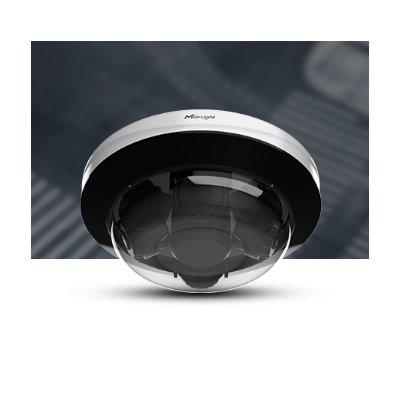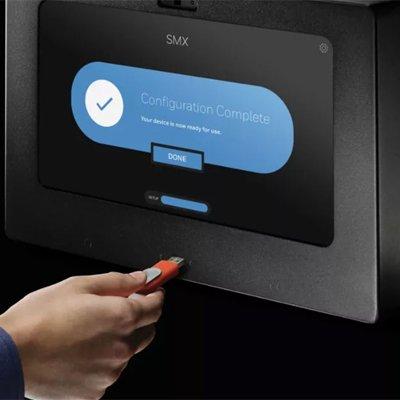What’s new with Licence Plate Recognition (LPR) and/or Automated Number-Plate Recognition (ANPR) systems?
Editor Introduction
In the United States, they are called licence plate recognition (LPR) systems. In Europe, the more common term is automated licence number-plate recognition (ANPR). In either case, the systems provide capabilities that can benefit a range of applications from schools to municipalities to parking lots. Newer technologies can even identify vehicle colour, type, make and model. We asked this week’s Expert Panel Roundtable: What's new with licence plate recognition (LPR) and/or automated number-plate recognition (ANPR) systems?
Licence Plate Recognition (LPR) and Automated Number-Plate Systems (ANPR) significantly enhance the ability to collect intelligence and avert risks through their integration with connected intelligence systems. These cutting-edge technologies offer invaluable contributions to law enforcement agencies, corporate security teams, and organisations by facilitating efficient data gathering and analysis of vehicle movements and identities. LPR and ANPR systems provide a powerful means to track suspicious or wanted vehicles, identify stolen cars, and aid in protection efforts by capturing and processing licence plate information. This proactive approach to intelligence collection enables quicker detection of potential threats, facilitates the tracking of criminal activities, and ensures rapid responses to threat management. Integrating LPR and ANPR data with other security platforms creates a centralised hub of connected intelligence, encompassing information from diverse sources like surveillance cameras, access control systems, and social media monitoring. By harmoniously combining this wealth of data, security teams can uncover hidden correlations, identify patterns, and detect anomalies that might otherwise elude traditional methods. This connected intelligence approach optimises the efficiency of the intelligence collection process. It empowers security professionals to proactively mitigate risks, safeguard assets, personnel, and reputations, and foster a safer environment.
When it comes to licence plate recognition, the quality of the LPR solution is strongly dependent on the quality of the captured images – and the sensor is at the foundation of the system. The detection rate and accuracy of an LPR system are also contingent upon the camera’s mounting height, tilt angle and the distance to the vehicle. Thankfully, today there exist several modern LPR solutions designed for a variety of use cases across industries. These solutions include the powerful image capture and processing capabilities today’s organisations need to keep vehicle-heavy areas safe and secure, and they also provide multiple different installation options to ensure that the system’s cameras can be placed exactly where they need to be. When equipped with AI-enabled video analytics, LPR can be implemented for slow-speed traffic monitoring, in garages or parking lots, and much more – providing key operational and business intelligence data.
The latest generation of automatic licence plate recognition (ALPR) systems goes beyond pure licence plate character recognition. New ALPR systems now feature vehicle-centric analytics that can identify vehicle colour, type, make, and model, as well as behaviour data, such as speed estimation and direction of travel. This enables investigators to narrow their search, even when there is no – or only partial – licence plate information available. There is also a growing demand for flexibility in solution options. More users are turning to solar-powered and mobile options to meet new demands. Data from ALPR systems is being used for purposes beyond law enforcement, including parking lot efficiency, bus lane monitoring, car wash operations, and other unique business goals. ALPR solutions are evolving to meet these new objectives.
Automated Speed Enforcement (ASE) has benefitted greatly from the advances in LPR. It has empowered municipalities, school boards, college campuses and law enforcement agencies to better understand traffic and use the data to help to keep people safe. When it comes to using LPR in school zones, capturing vehicles going over the posted speeding limit is only the beginning of what LPR can do. LPR has become an essential part of a school’s overall security and has been used to identify and intercept unauthorised vehicles on campus, alert security to unusual events, and assist in crime investigations. LPR has also shown great use in construction zones. In this scenario, contractors’ safety teams can gain insights into traffic patterns, flow of traffic and vehicle speeds and identify ways to direct traffic to keep the workers safe.
One significant advancement is the integration of LPR systems as a crucial component of bank security protocols. By automatically identifying and tracking vehicles entering and exiting bank premises, LPR technology provides an additional layer of security. The captured licence plate numbers can be compared against watchlists or databases of suspicious vehicles, helping to detect potential threats or criminal activities. This capability enables banks to promptly respond to security breaches and initiate appropriate actions to mitigate risks. Moreover, LPR technology is proving to be valuable in fraud prevention efforts within the banking industry. By capturing and analysing licence plate data, banks can identify suspicious or unauthorised vehicles associated with fraudulent activities. This includes activities such as identity theft, check fraud, or ATM skimming. By cross-referencing licence plate information with internal databases or law enforcement records, banks can identify patterns, track potential suspects, and enhance their ability to prevent and investigate fraud cases.
Over the past decade, ALPR systems have benefitted from developments in AI, machine learning, surveillance cameras, and related innovations. Many ALPR systems use infrared (IR) lighting to enable the camera to perform at any time of day or night. Algorithms used to identify a licence plate have also become more complex, which has helped to make ALPR systems more accurate. And yet, even as these technologies evolved, many operators faced the same issues that they did in the late-1970s, including object misidentification and high error rates due to blurry images, poor image resolution and poor lighting. However, the solution to these problems is simple. Using external illumination sources — especially IR illuminators that help rebalance lighting in video images — not only improves detection accuracy but also ensures that most LPR/ANPR systems can operate around the clock. Across applications, better illumination has been proven to extend the detection range of many video analytics.
Editor Summary
In the case of ANPR and/or LPR systems, dependable detection rates rely on elements such as image quality and lighting. Expanding technologies are increasing accuracy and extending capabilities to identify vehicle colour, type, make and model. Whether detecting speeders in a school zone or fraudulent customers at a bank, LPR and ANPR systems are finding new utility in a variety of applications. Broadly speaking, the systems enhance the ability to collect intelligence and avert risks when combined with other connected intelligence systems.
- Related links
- Axis Communications CCTV software
- Axis Communications Digital video recorders (DVRs)
- Genetec CCTV software
- Verint Digital video recorders (DVRs)
- Verint CCTV software
- Axis Communications Video servers (IP transmission)
- Verint Video servers (IP transmission)
- Axis Communications Storage
- IP Surveillance Software CCTV software
- Monitoring Software CCTV software
- Surveillance Software CCTV software
- Related categories
- CCTV software
- Digital video recorders (DVRs)
- Video servers (IP transmission)
- Storage
Expert commentary
Maximising security and performance
DownloadThe truth behind 9 mobile access myths
DownloadGuide for HAAS: New choice of SMB security system
DownloadSecurity practices for hotels
DownloadAccess control system planning phase 2
DownloadMilesight 4x5MP AI Multi-Directional Camera
Anviz AI-driven Fisheye Dome Network Camera
Honeywell SMX: Cybersecurity for Operational Environments





















